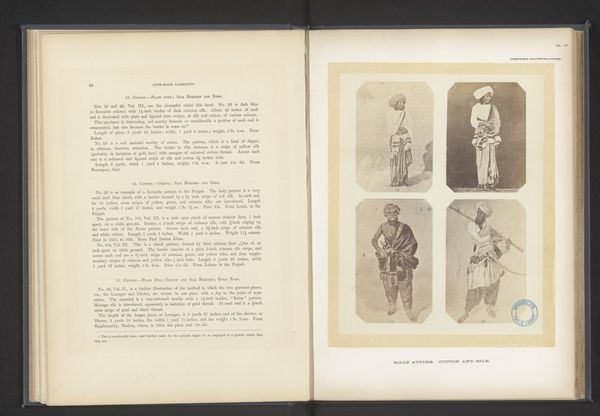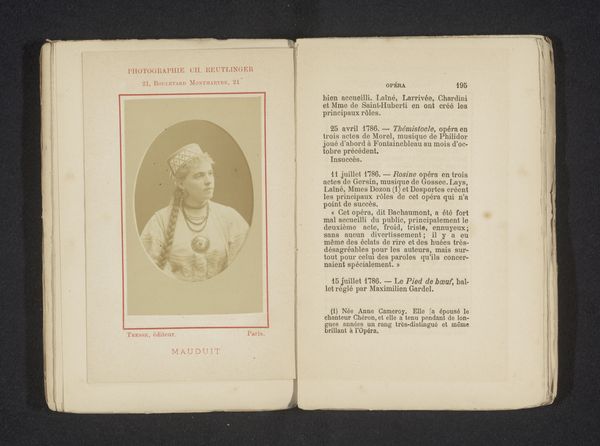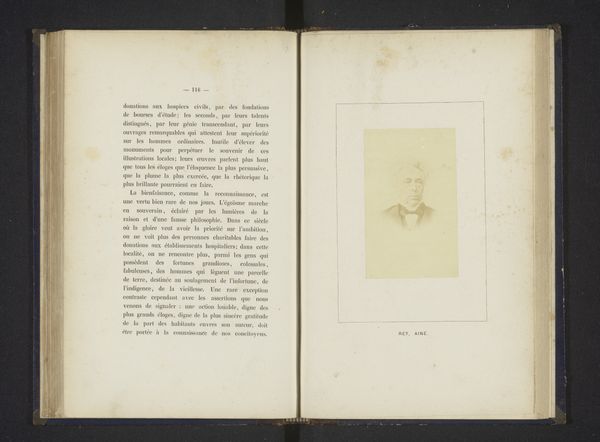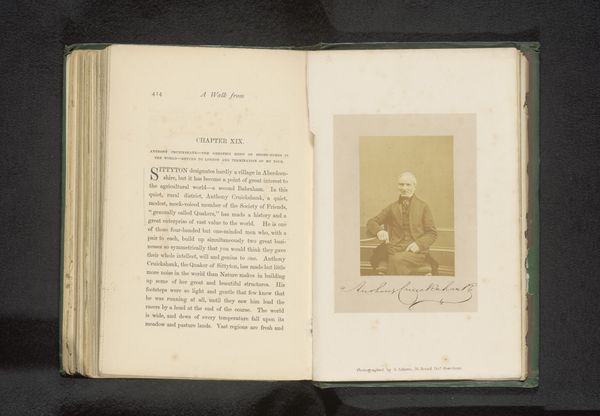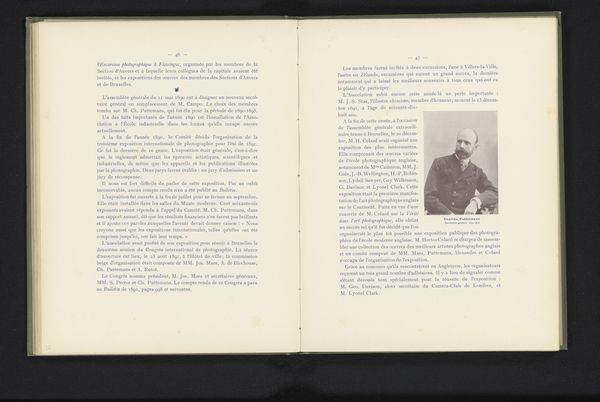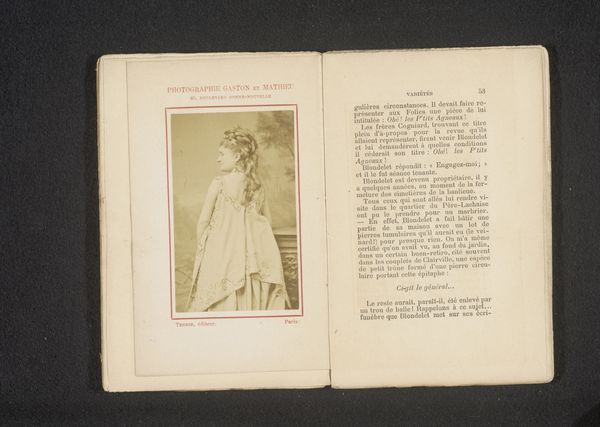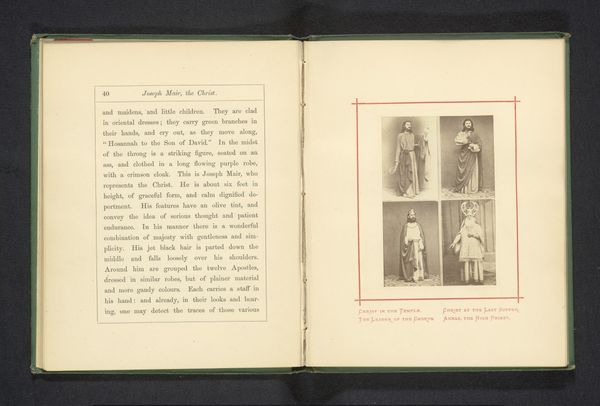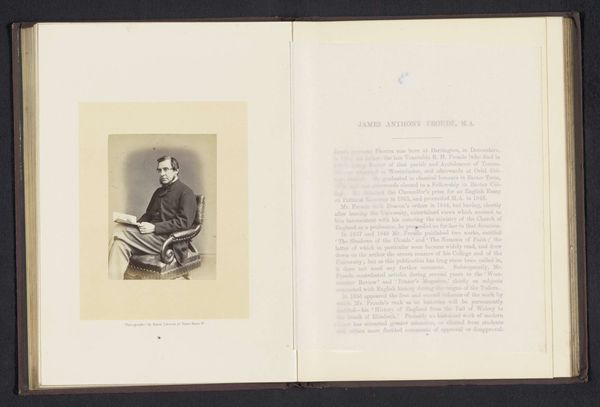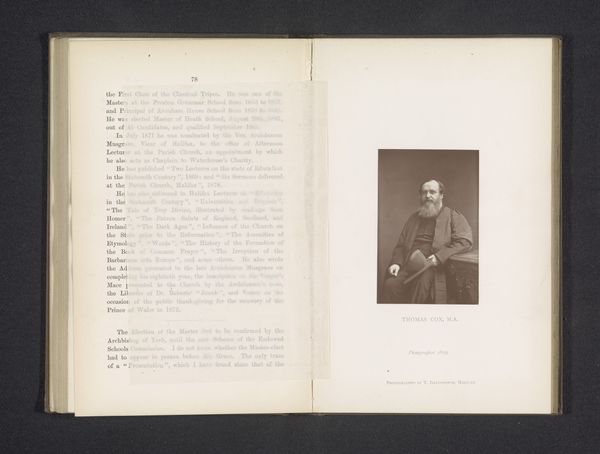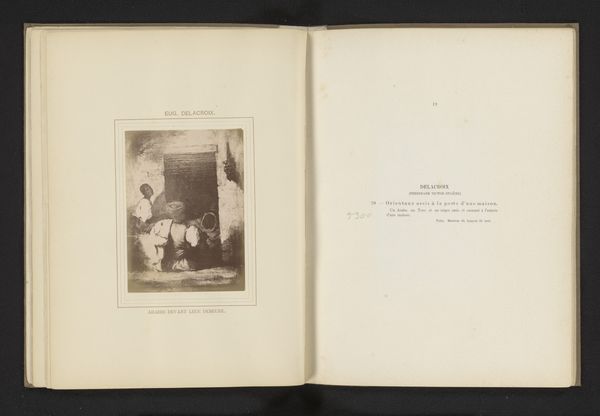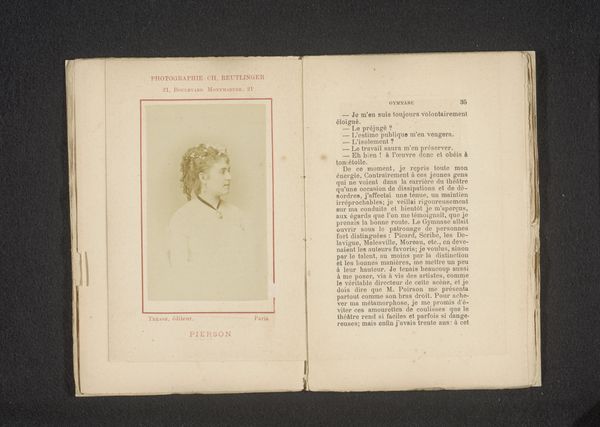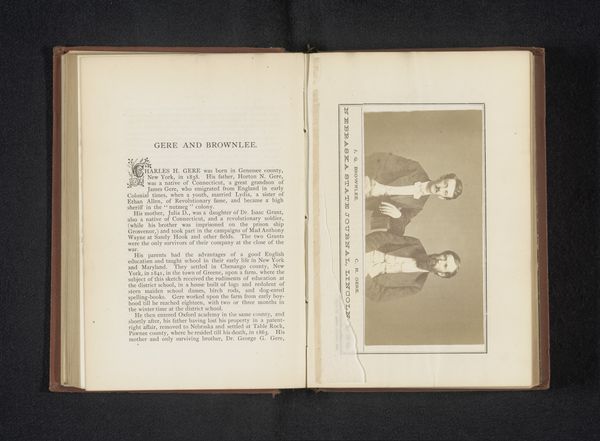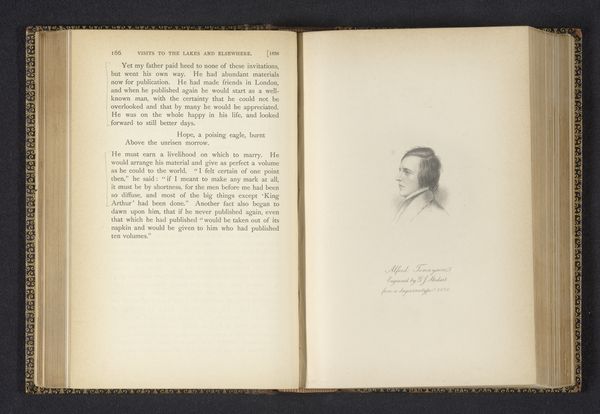
Dimensions: height 91 mm, width 55 mm
Copyright: Rijks Museum: Open Domain
Curator: Before us, we have a portrait titled "Portret van een Franse actrice" from before 1875, created by Charles Reutlinger and residing in the Rijksmuseum. It's an albumen print. Editor: The photograph seems almost spectral. It's ethereal and softly focused. The book format combined with the neoclassical portrait style, make her look so dainty but so very poised, yet a sadness about her. Curator: Let's consider the materials and techniques at play here. Reutlinger, operating a renowned photographic studio, produced albumen prints, a process involving coating paper with egg white to create a smooth surface for the photographic emulsion. The use of light and shadow is meticulously controlled here to achieve this effect. We can imagine Reutlinger carefully posed and lit the subject in his studio. Editor: Right. The image's creation had a purpose – the documentation and idolization of celebrity actresses within the cultural and economic contexts of burgeoning mass media. Also, actresses often faced societal prejudice; these photographs become assertions of individual identity. Note her direct gaze. It demands our attention and acknowledges her role not just as subject, but as an active participant in image-making. Curator: Exactly, consider the socio-economic implications. Photography provided access to celebrity to the broader population, as a manufactured celebrity object but still grounded in a class-system as not everyone could procure or appreciate such printed image. It’s a commodity and simultaneously creates an image that would be highly sought after at the time, and that had inherent value for its own manufacturing. Editor: She becomes an icon not just of beauty but also a figure representing the shifting roles of women, performance, and visibility in modern society. Her adornments – the hat and what appear to be embellishments – subtly convey an aspiration of status and independence but also remind us about how image in general can portray social meaning. Curator: It underscores the constructed nature of identity, reflecting broader societal perceptions of class, gender, and artistry as they were evolving then. The labour and the photographic materials work as more than merely a portrait – they reflect status, wealth, class aspirations. Editor: Right, analyzing her as a product and consumer helps to decode underlying values. It definitely encourages dialogues on female visibility, representation, and historical intersectionality within broader studies. Curator: Agreed. We can appreciate this portrait by observing both the artistic intention through the selected materials, and consider the portrait subject within social, gender and cultural identity from this epoch. Editor: Absolutely, Charles Reutlinger has not only frozen a face in time, but given us layers that reflect and refract meanings across decades.
Comments
No comments
Be the first to comment and join the conversation on the ultimate creative platform.
